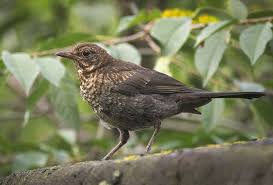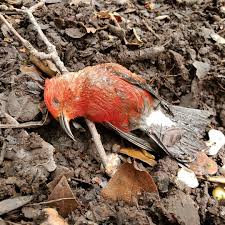Malaria (in birds), scientifically known as avian malaria, is a disease that affects our feathered friends. Just like humans can get malaria from mosquitoes, birds can too. It’s caused by tiny parasites called Plasmodium. These parasites are carried by certain mosquitoes, and when they bite a bird, they pass on the infection.
Birds infected with avian malaria may not show symptoms immediately. It’s like a silent invader. Over time, the parasites invade the bird’s red blood cells, causing damage and making the bird feel weak. Imagine having tiny creatures inside you, disrupting your blood flow – that’s what happens to birds with avian malaria.
The mosquitoes play a crucial role in spreading avian malaria. When an infected mosquito bites a bird, it becomes a carrier. It’s like a mosquito turning into a tiny, unwitting messenger of illness. These infected mosquitoes then fly around, biting other birds and spreading the disease.
One might wonder, why is avian malaria important? Well, it affects not just one bird, but many. Birds are essential for the balance of ecosystems. They help control insect populations and spread seeds, contributing to the overall health of the environment. Avian malaria disrupts this balance, impacting the well-being of bird communities and, consequently, the ecosystems they inhabit.
Researchers study avian malaria to understand how it spreads and its effects on different bird species. They try to find ways to protect our feathered friends, whether through mosquito control or developing treatments. It’s like a scientific puzzle – figuring out how to keep birds healthy and maintain the harmony of nature.
However, avian malaria is a stealthy threat to birds, carried by mosquitoes and affecting their health. Understanding this disease helps scientists protect bird populations and maintain the delicate balance of our ecosystems. It’s a reminder of how interconnected all living things are and the importance of safeguarding the well-being of our avian companions.
Read Also: Tomato Yellow Leaf Curl Virus: Description, Damages Caused, Control and Preventive Measures
Animals Affected by Malaria (avian malaria)

Malaria (in birds) primarily impacts avian species, but the consequences extend beyond feathered creatures. Mosquitoes, acting as carriers of the disease, play a key role in affecting various animals. When these mosquitoes bite infected birds, they can transmit the malaria-causing parasites to other animals as well.
For instance, certain reptiles and amphibians may experience the effects of avian malaria. This transmission highlights the interconnected nature of ecosystems, where one species’ health can influence others. Though these non-avian animals might not show symptoms akin to those in birds, they can serve as carriers of the parasites, potentially contributing to the spread of the disease.
Understanding the broader impact of avian malaria on different animal groups underscores the importance of comprehensive research and conservation efforts. By unraveling the intricate web of interactions between mosquitoes, birds, and other animals, scientists can work towards developing strategies to mitigate the impact of this disease on diverse ecosystems. It’s a reminder that the health of one species can have cascading effects throughout the animal kingdom.
Damages Caused by Malaria (in birds)

Malaria (in birds) wreaks havoc on our feathered friends, causing various damages to their health and well-being. The parasites responsible for avian malaria, known as Plasmodium, infiltrate the red blood cells of infected birds, leading to a range of adverse effects.
Firstly, avian malaria weakens birds. As the parasites multiply within their blood cells, the birds may experience fatigue and a decline in overall energy. Imagine feeling tired all the time – that’s what these birds go through.
Secondly, the disease can affect the reproductive capabilities of birds. Infected individuals may struggle with breeding, laying eggs, or caring for their offspring. This disruption in the natural life cycle of birds can have significant consequences for their populations.
Furthermore, avian malaria contributes to the decline of certain bird species. Birds play a vital role in maintaining ecological balance by controlling insect populations and participating in seed dispersal. When malaria diminishes bird populations, it disrupts these ecological functions, potentially leading to an imbalance in the ecosystem.
In addition to its impact on birds, avian malaria indirectly affects other animals. Mosquitoes, acting as carriers, transmit the parasites to various species, creating a ripple effect through the interconnected web of life.
Understanding the damages caused by avian malaria emphasizes the importance of conservation efforts. Scientists and researchers work tirelessly to find ways to protect birds from this disease, recognizing its broader implications for ecosystems. Preserving the health of bird populations is not only crucial for their well-being but also for maintaining the delicate harmony of the natural world.
Rwad Also: Maize Streak Virus: Description, Damages Caused, Control and Preventive Measures
Control and Preventive Measures

Controlling and preventing avian malaria involves a multifaceted approach aimed at interrupting the transmission of the disease and safeguarding the health of bird populations. Some key measures include:
1. Mosquito Control: Targeting the mosquitoes that act as carriers plays a crucial role. Implementing mosquito control measures, such as using insecticides and habitat management, helps reduce the spread of avian malaria.
2. Habitat Management: Altering the environment to make it less favorable for mosquitoes can be effective. This includes eliminating stagnant water sources where mosquitoes breed and maintaining bird habitats in a way that minimizes mosquito presence.
3. Research and Surveillance: Continuous monitoring and research are essential for understanding the prevalence and dynamics of avian malaria. Tracking infected bird populations and identifying areas with high transmission rates aid in implementing targeted control measures.
4. Immunization and Treatment: Developing vaccines or treatments for birds against avian malaria is an ongoing area of research. Providing infected birds with medical interventions can help manage the disease and reduce its impact on individual birds and populations.
5. Conservation Initiatives: Protecting bird species vulnerable to avian malaria is crucial. Conservation efforts, including preserving natural habitats, implementing breeding programs, and managing populations, contribute to overall biodiversity and ecosystem health.
6. Public Awareness: Educating the public, especially in regions where avian malaria is prevalent, about the importance of bird conservation and the role of mosquitoes in disease transmission helps garner support for preventive measures.
7. Global Collaboration: Avian malaria is a global issue, and collaborative efforts among countries, researchers, and conservation organizations are vital. Sharing knowledge, resources, and best practices enhance the effectiveness of control and prevention strategies.
Implementing these measures collectively addresses the complex challenges posed by avian malaria. As scientists and conservationists work together, the goal is to create a sustainable and resilient environment where birds can thrive without the constant threat of this debilitating disease.
Frequently Asked Questions (FAQs) About Malaria (avian malaria)
Q1: What is avian malaria, and how does it affect birds?
A: Avian malaria, scientifically known as Plasmodium infection in birds, is a disease caused by parasites transmitted through mosquito bites. It affects birds by invading their red blood cells, causing weakness, fatigue, and potentially impacting their reproductive capabilities.
Q2: Can birds recover from avian malaria on their own?
A: Some birds may develop immunity over time, but severe cases often require intervention. Research is ongoing to understand natural resistance and develop effective treatments or vaccines.
Q3: How is avian malaria transmitted?
A: Mosquitoes act as carriers, transmitting the parasites when they bite infected birds. The cycle continues as infected mosquitoes spread the disease to other birds during subsequent bites.
Q4: Are all bird species equally susceptible to avian malaria?
A: No, susceptibility varies among bird species. Some may be highly vulnerable, while others show resistance. Researchers study these differences to understand and mitigate the impact of avian malaria on diverse bird populations.
Q5: Can avian malaria affect other animals or humans?
A: While avian malaria primarily affects birds, certain reptiles and amphibians can serve as carriers. There is a different type of malaria that affects humans, transmitted by specific types of mosquitoes.
Q6: How can we prevent avian malaria from spreading?
A: Preventive measures include mosquito control, habitat management, research and surveillance, immunization and treatment for birds, conservation initiatives, public awareness, and global collaboration.
Q7: Is avian malaria a significant threat to bird populations globally?
A: Yes, avian malaria poses a threat, particularly in regions where the disease is prevalent. It can lead to population declines, affecting ecosystems and biodiversity.
Q8: Can avian malaria be eradicated entirely?
A: Complete eradication is challenging due to the complex nature of ecosystems and the involvement of mosquitoes in the transmission cycle. However, effective control measures can significantly reduce its impact.
Q9: How does avian malaria impact ecosystem balance?
A: Avian malaria disrupts ecosystem balance by affecting bird populations, which play crucial roles in controlling insect populations and participating in seed dispersal. This disruption can have cascading effects on other species and ecological processes.
Q10: How can individuals contribute to avian malaria prevention?
A: Individuals can support conservation efforts, raise awareness about the importance of bird health, and follow recommended practices for mosquito control, such as eliminating stagnant water sources around homes. Global awareness and collaboration are key to addressing this issue effectively.
Read Also: The Ultimate Guide to Unlocking the Potential of Garbage Wastes

